Features of the
To decorate a kitchen in the art deco style, you should rely on its main features:
- Geometry. Intricate shapes blend harmoniously with clean lines and contours.
- Decorativeness. All kinds of figurines, paintings and other objects of art emphasize the originality of the setting.
- High cost... Counterfeits and cheap imitations of materials are unacceptable.
- Symmetry. Architectural elements are thought out to the smallest detail and make up a single composition.
Kitchen color
Art Deco does not tolerate flashy colors - muted tones are characteristic of it. Black and white predominate in kitchen finishes. Strict monochrome is diluted with accessories of calm, unobtrusive colors: if blue is used, then it is deep indigo, if green is olive or dark emerald. The colors of natural noble wood are popular, as well as all shades of gray.
The photo shows a stylish art deco kitchen interior with marbled decor and an unusual ceiling.
The Art Deco style, like no other, is distinguished by brilliance and contrast. A luxurious shine is achieved by adding precious metals to the setting. Light fixtures, furniture fittings, mirrors and frames can be gold or silver.
The photo shows an elegant art deco kitchen in white and gold tones.
Finishing
Art Deco presupposes an abundance of space, but the idea can be realized in a small apartment, for example, a Khrushchev building. A combined kitchen-living room would be a good option - geometric ornaments will help hide the modest dimensions of the room, and mirror and glossy surfaces will add light and air, making the room more complex.
- Floor. The most suitable option for an art deco kitchen is ceramic tiles. It is practical, has a wide selection of textures and is aesthetically pleasing. The tile can imitate stone (marble, granite) or be monochromatic, the main thing is that the floor matches the walls and ceiling. If the floor is supposed to be wooden, light colors are excluded - only dark noble wood (oak, mahogany). Both parquet and high-quality laminate will look beneficial.
The photo shows a chic indigo kitchen with gilding, which is set off by a glossy tile floor.
- Walls. Wallpaper with a characteristic pattern, as well as decorative plaster, are suitable for the dining area. An accent wall can be decorated with a stripe, exotic motifs (for example, a zebra skin) or a fresco. Contrasting elements will play to maintain the style.
- Ceiling... The sophisticated top is another hallmark of the art deco kitchen. Stucco moldings, suspended structures or beams made of expensive wood will emphasize the pretentiousness of the situation.
- Apron... An apron can also be a highlight of the interior. For its decoration, tiles are traditionally used - with or without ornaments - or mosaics (mirror, glass or combined).
In the photo there is a spacious kitchen, a feature of which is a black and white apron made of hog tiles, laid diagonally.
Furniture and appliances
When choosing furniture, you must be guided by one rule: the headset should look rich and sophisticated.The table and chairs of the dining group are usually combined with each other. A table made of noble wood or glass will fit, and chairs with curved legs and carvings will suit it. You can choose as soft seats, upholstered in velvet or natural leather, and hard - with metal elements. The spacious kitchen also includes a sofa or corner, creating a cozy place for receiving guests.
Art Deco differs from traditional styles in that kitchen appliances are not hidden, but come to the fore. A high-tech stove, oven or extractor hood sometimes becomes the center of the interior, they attract attention and should look appropriate: massive and expensive.
Pictured is a gorgeous kitchen with a table that repeats the pattern on the accent wall and chairs with elegantly curved backs.
The kitchen doors are decorated with diamond-shaped lathing, glass or decorative inserts. The most common are glossy fronts, which are in perfect harmony with chrome surfaces.
In the photo there is an interior with an abundance of gloss on the facades, apron, countertop and floor.
Curtains
The fabric used in the interior of the kitchen, like many art deco elements, should play to maintain the style: the abundance of textures, ornaments and shine will only benefit. If the kitchen is small or the area near the window is covered with furniture, Roman shades with patterns and folds will do.
The photo shows spectacular curtains of deep blue color, perfectly shading the interior in white tones.
Several materials can be combined in the frame of the window. But it is advisable to hide the cornice under the ceiling - this technique makes the interior richer.
In the photo there is a kitchen with combined floor-length curtains, the ornament of which echoes the upholstery of the chairs.
Lighting and decor
Light in the art deco kitchen plays one of the most important roles. Lighting is made multi-level: a bulky theatrical chandelier made of crystal or a modern one made of metal and glass is successfully combined with built-in ceiling lights. Both an apron and a headset can be equipped with illumination. The original lamps often hang directly over the table.
Pictured is an art deco dining area with unusual metal lamps above the table.
Art Deco kitchen décor is always recognizable - you can see not only frescoes and paintings, but also American posters and movie posters from the 20s. Dishes, like other decorative elements, have shine and sophisticated shapes and serve as interior decoration. In addition, the kitchen always has a place for original mirrors that add chic to the decor.
In the photo there is a kitchen, the highlight of which was a fresco with a plot by the artist Alphonse Maria Mucha. Another interesting find is wall sconces enclosed in mirrored frames.
Popular interior items are works of art borrowed from the peoples of Ancient Egypt and the Far East: vases and figurines.
Photos in the interior
Since the opulence of art deco requires a lot of space, kitchens in this style are more often found in spacious rooms where placement is easy. The kitchen with the island, which always looks monumental and stylish, has a special splendor.
It is more difficult to equip a small kitchen in the art deco style: in a small space, for example, designing a studio kitchen, you should use fewer textures so that the interior looks more concise. At the same time, it is unacceptable to save on basic elements: decoration and furniture. But the use of mirrors, visually enlarging the space, will be very useful.
The photo shows a large kitchen island, which serves as both a cooking surface and a bar counter.
To increase the area, they often combine the kitchen and living room. The dining area is taken out into the room, thereby making room for a luxurious setting. But it's worth remembering that art deco interiors need a lot of air: they don't look good if the abundance of things clutters up the space.
The photo shows a combined kitchen-living room, the zones of which are united by a common ceiling design and repeating ornaments.
In addition, the art deco style does not tolerate clutter. Many polished and mirrored surfaces look impressive but require constant removal of smudges, drips and fingerprints.
In the photo there is a kitchen with an abundance of gold details, carved patterns and gloss.
Photo gallery
Luxurious art deco kitchens give the apartment interior a special charm and help to create an atmosphere of nobility and sophistication.

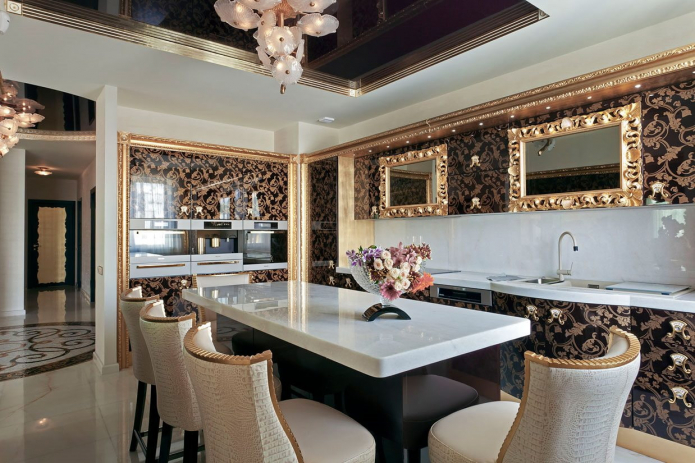
 10 practical tips for arranging a small kitchen in the country
10 practical tips for arranging a small kitchen in the country
 12 simple ideas for a small garden that will make it visually spacious
12 simple ideas for a small garden that will make it visually spacious
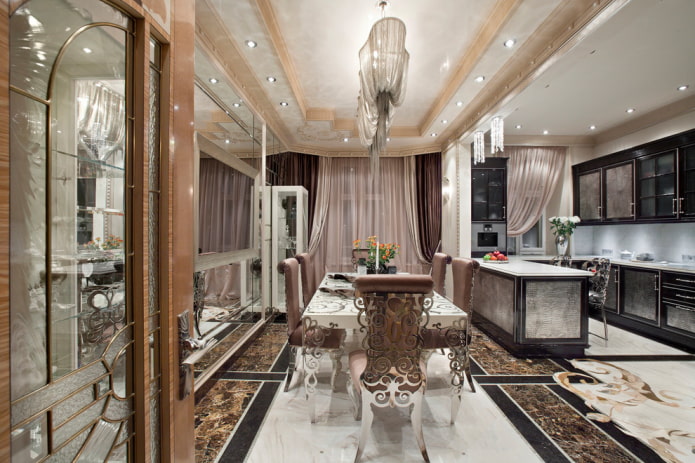
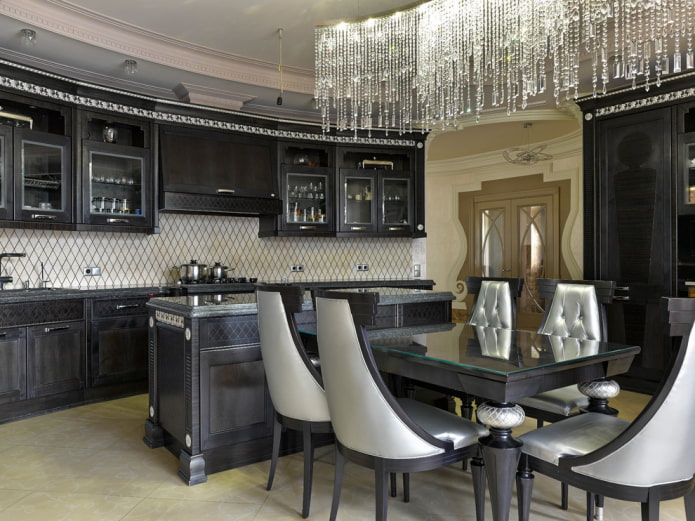
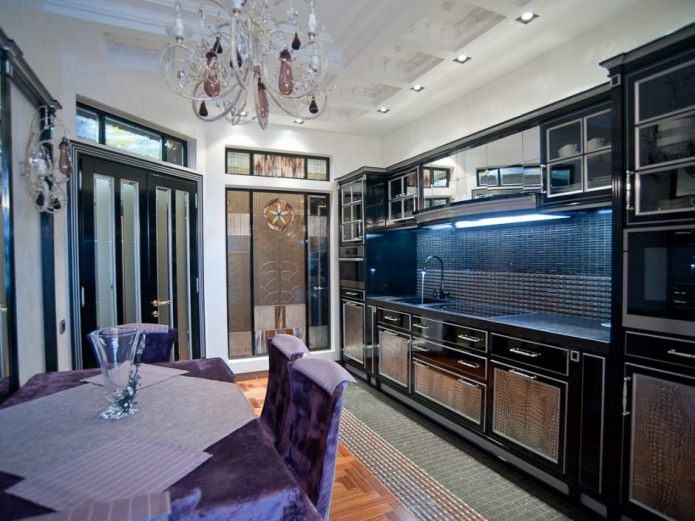
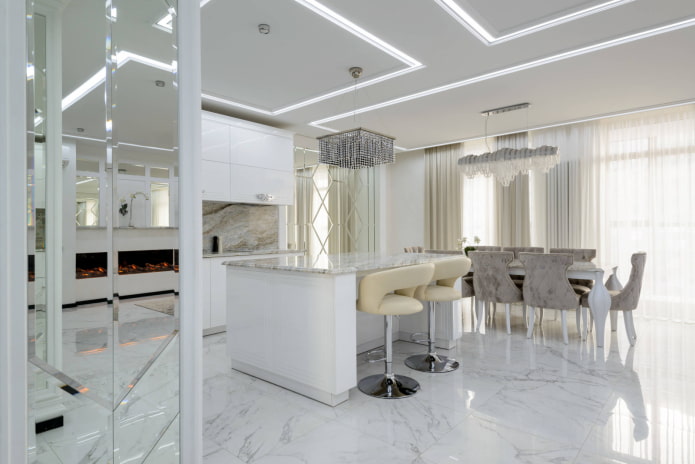
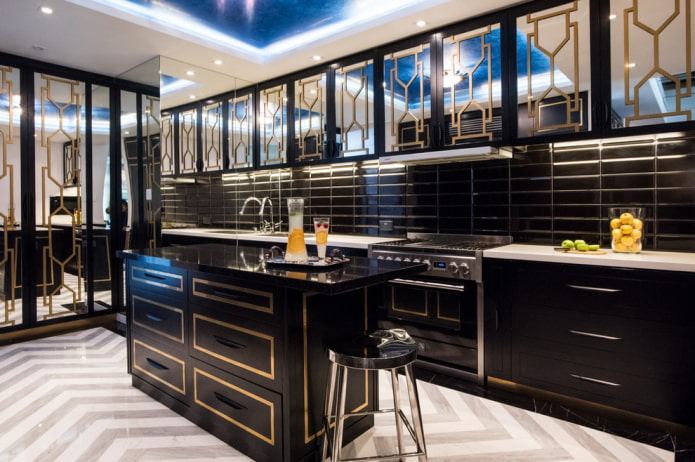
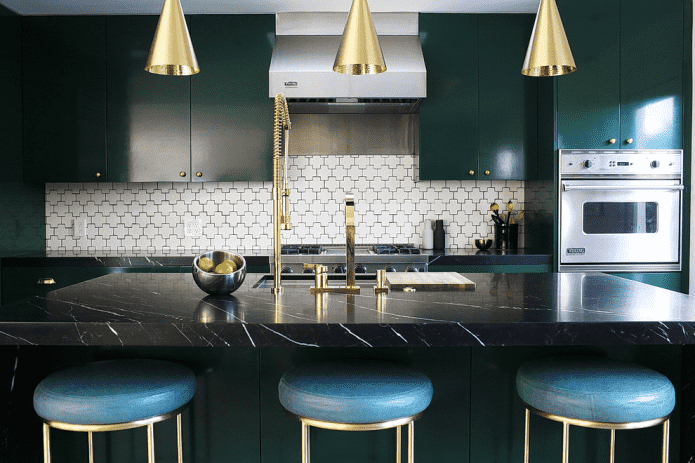
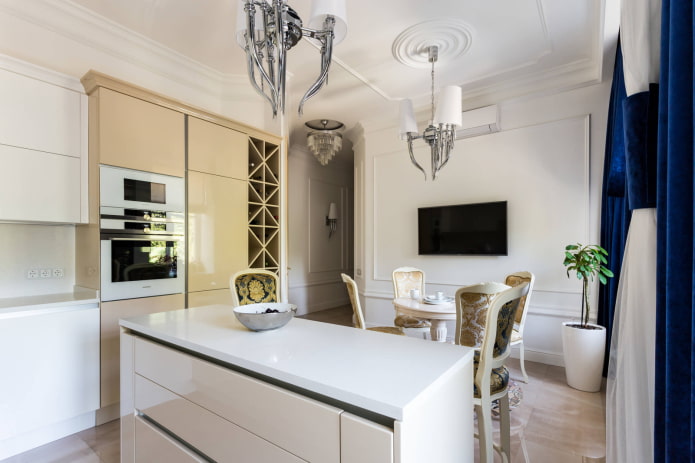
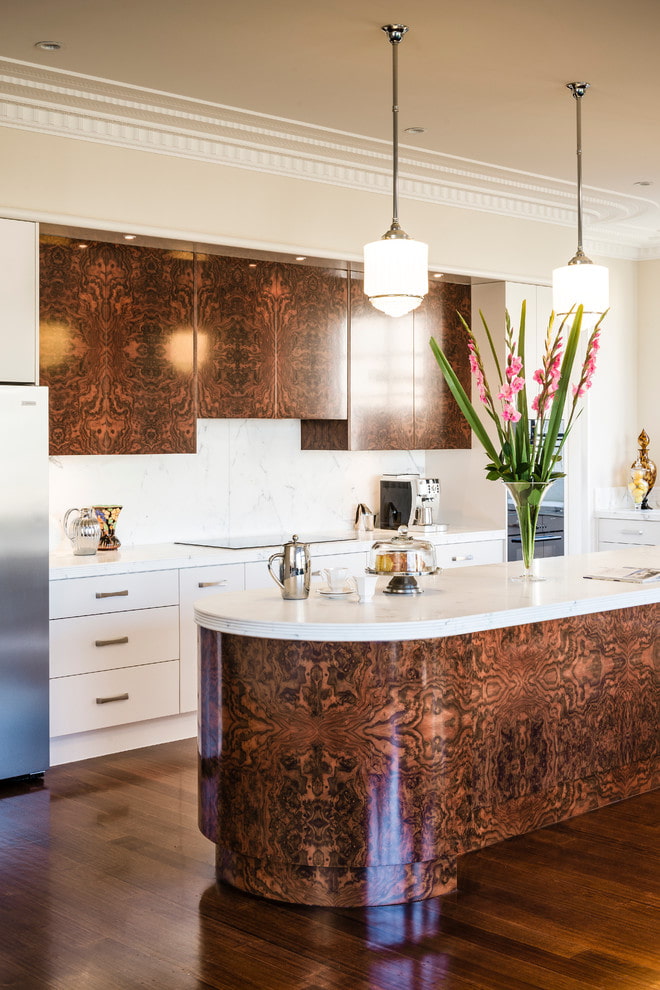
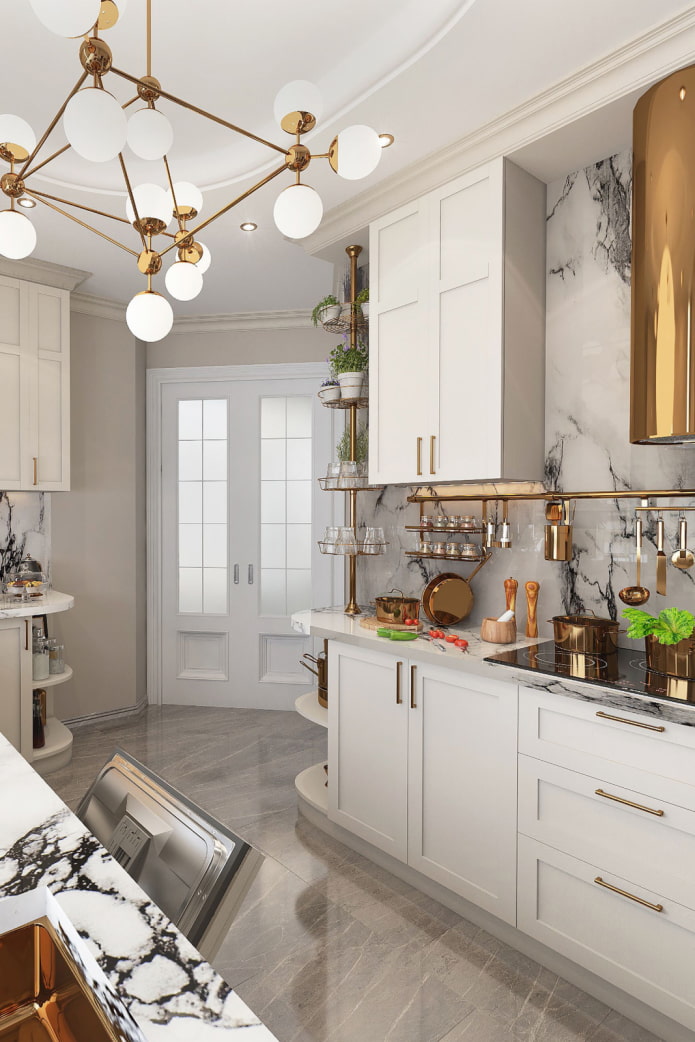
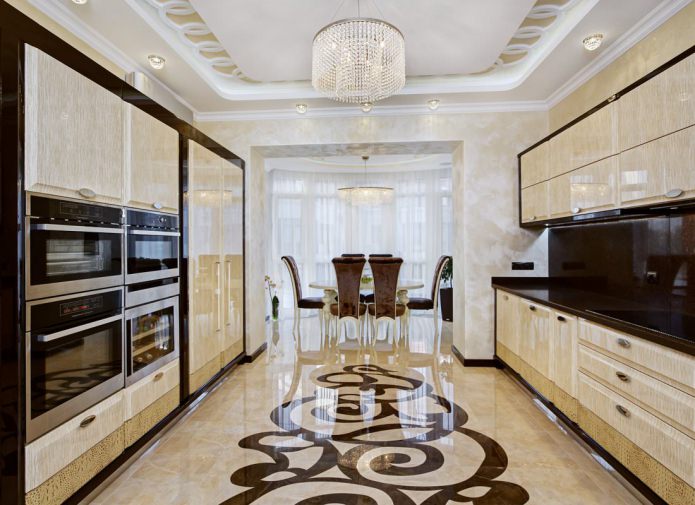
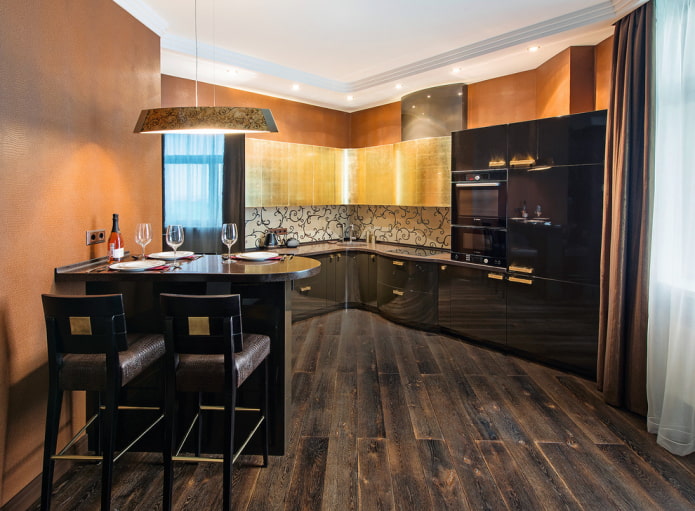
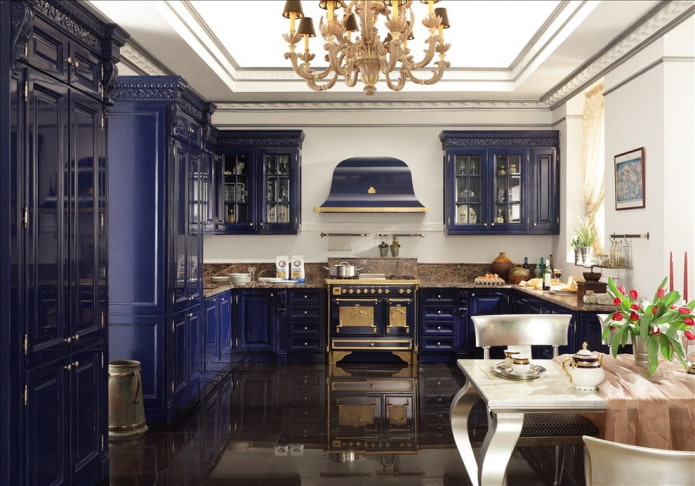
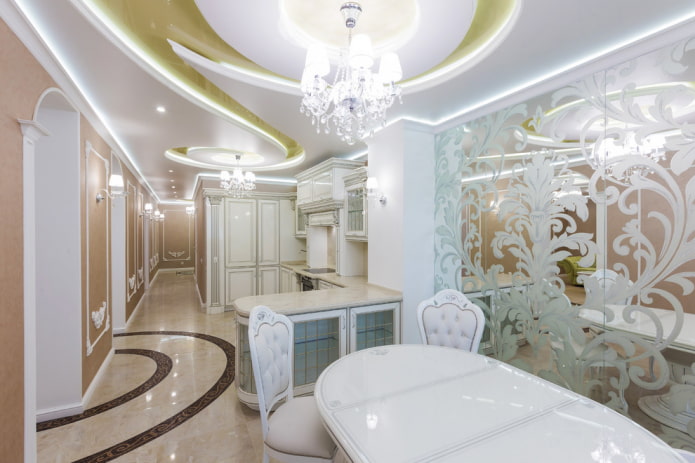
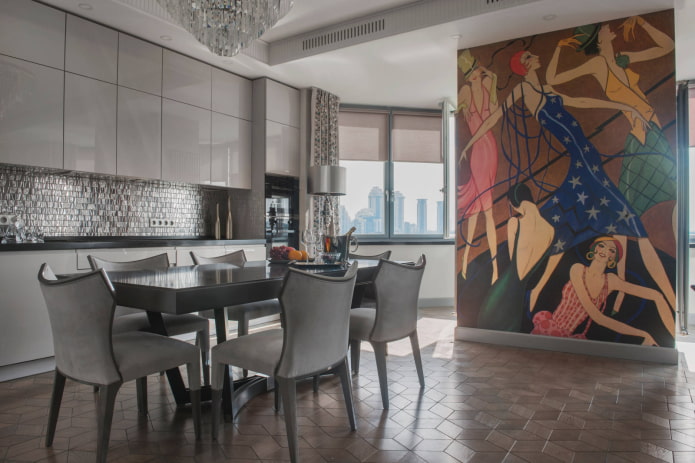
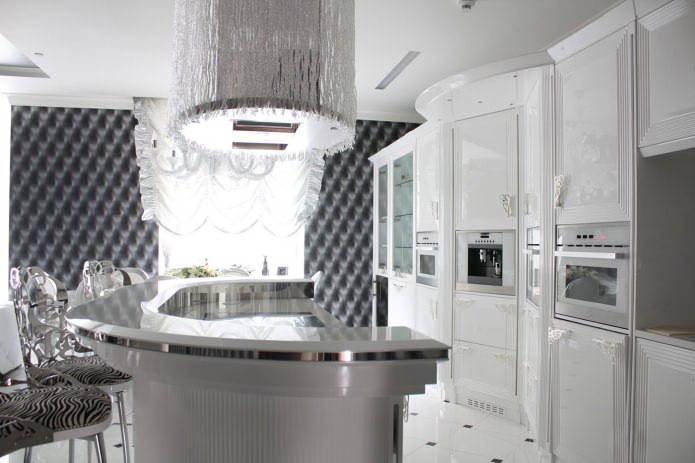
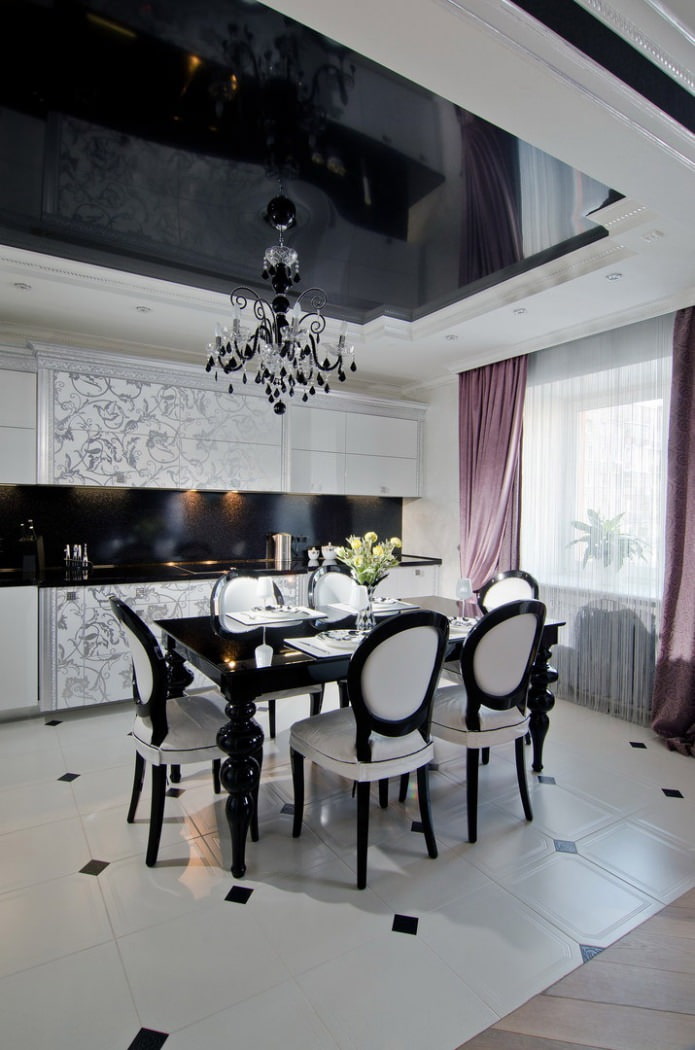
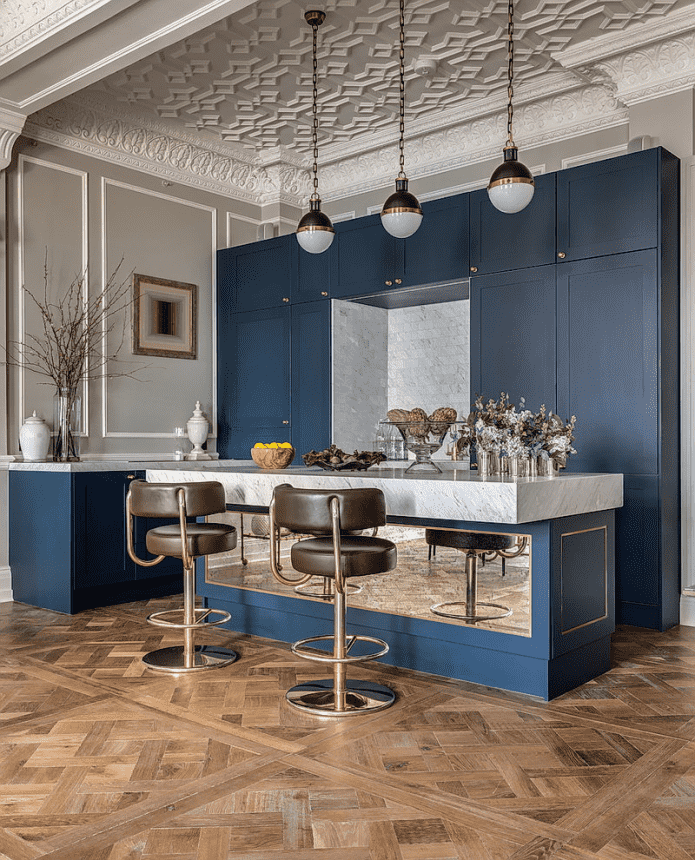
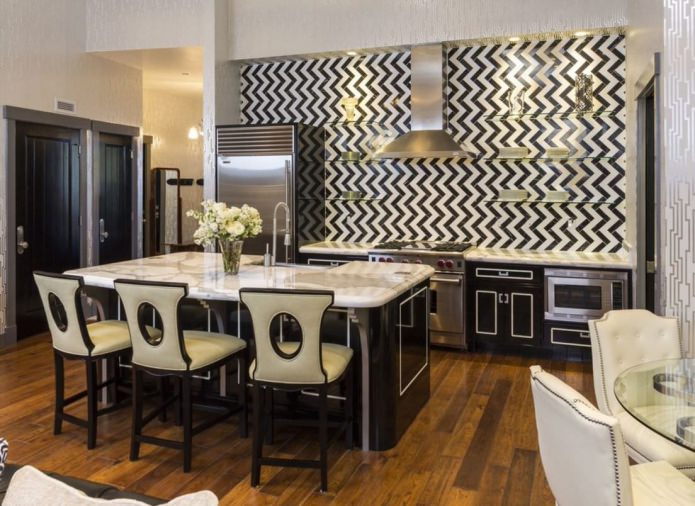
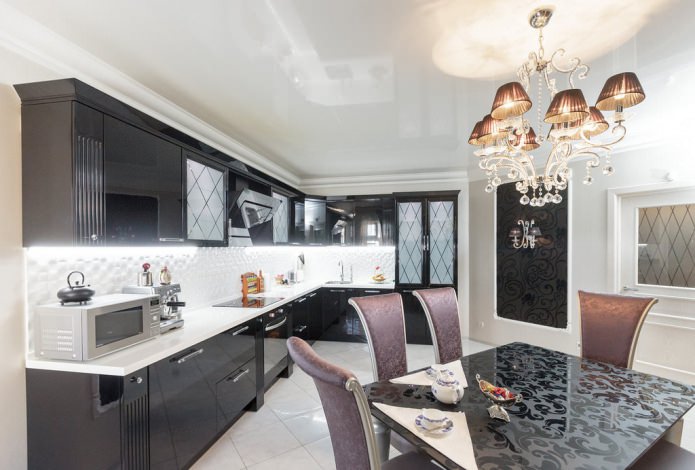
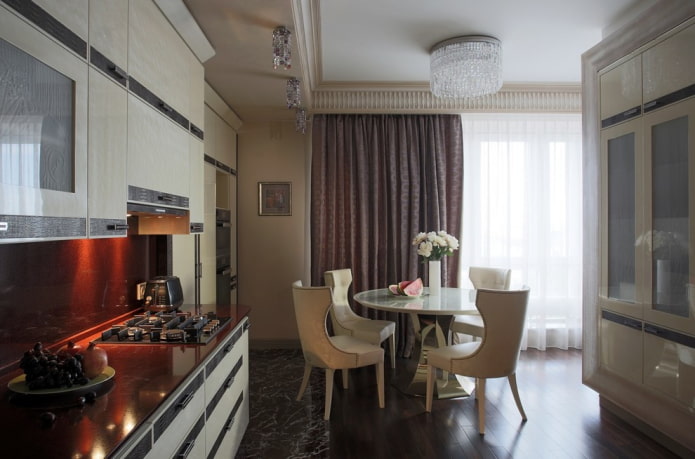

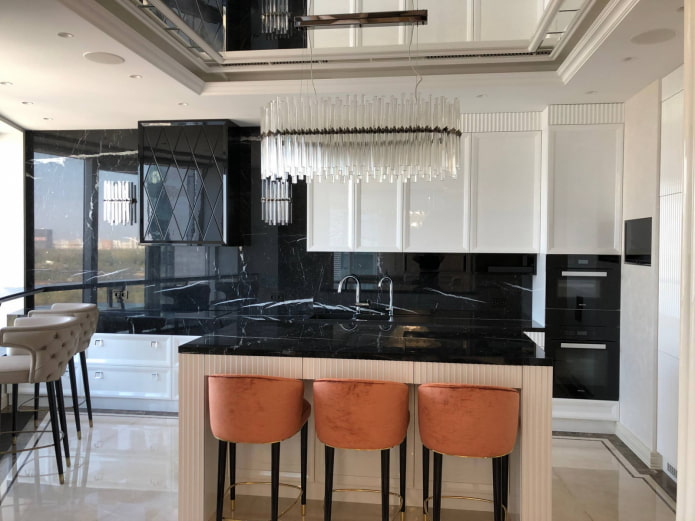
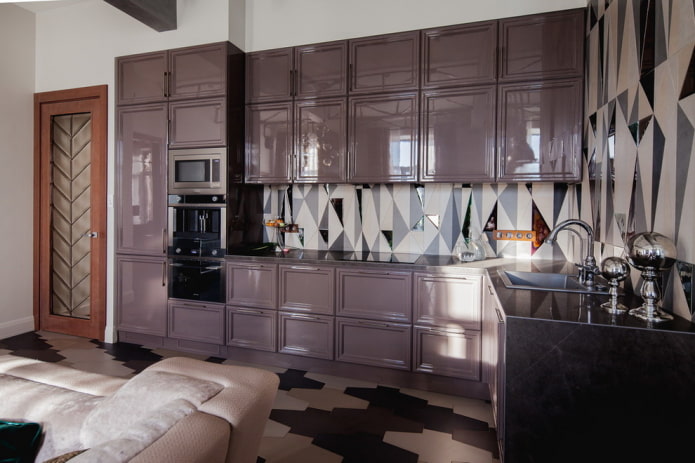
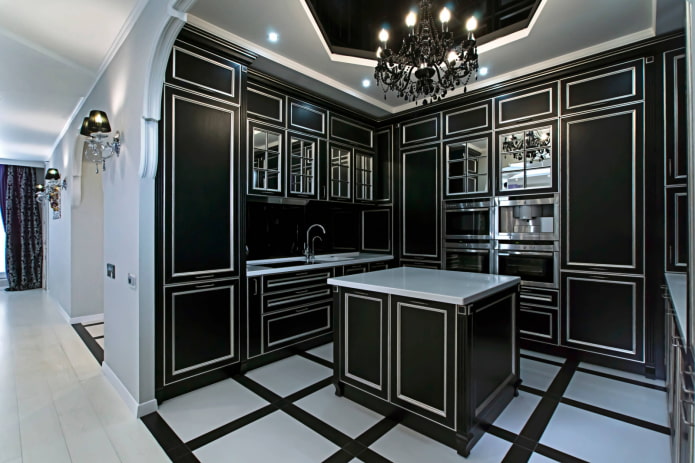

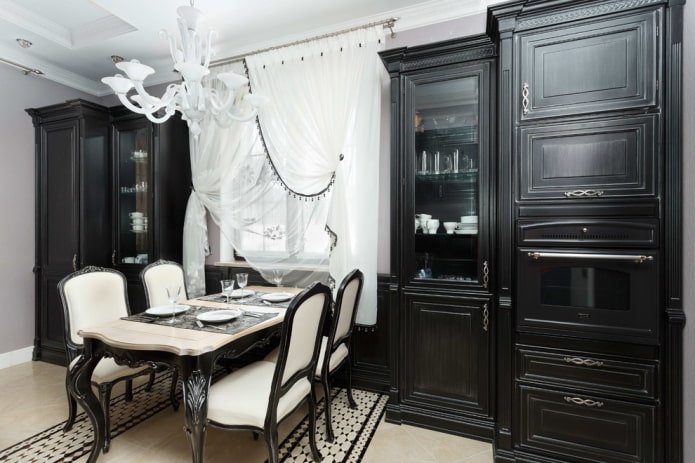
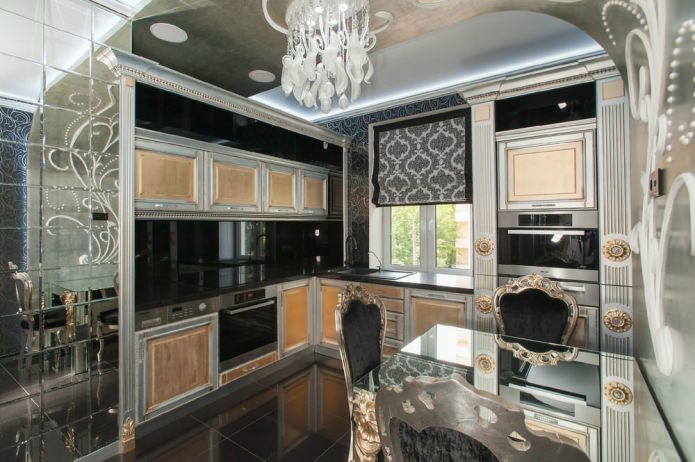
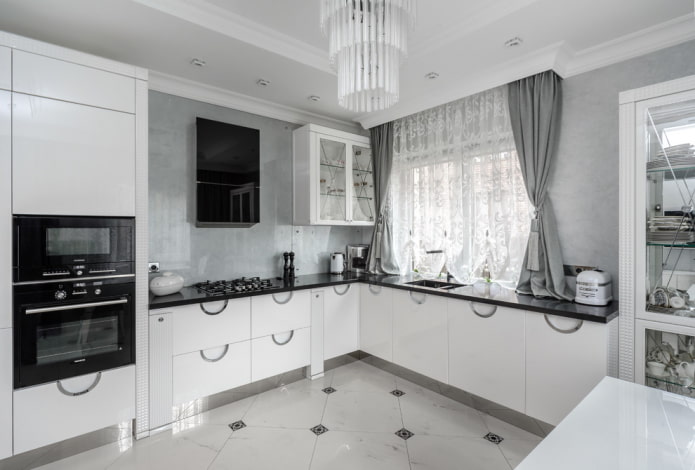
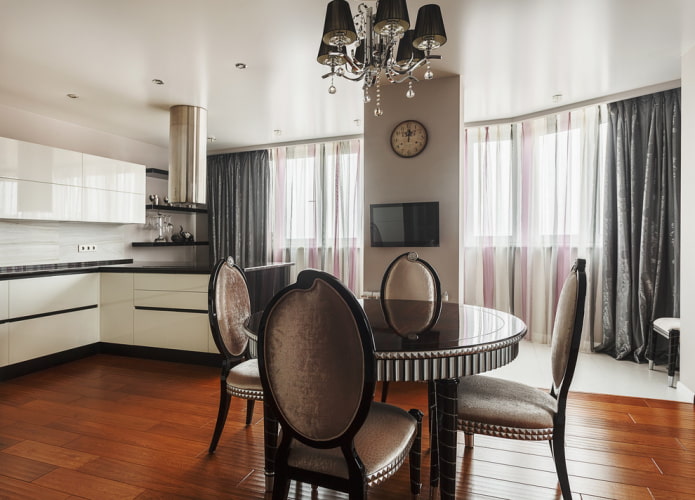

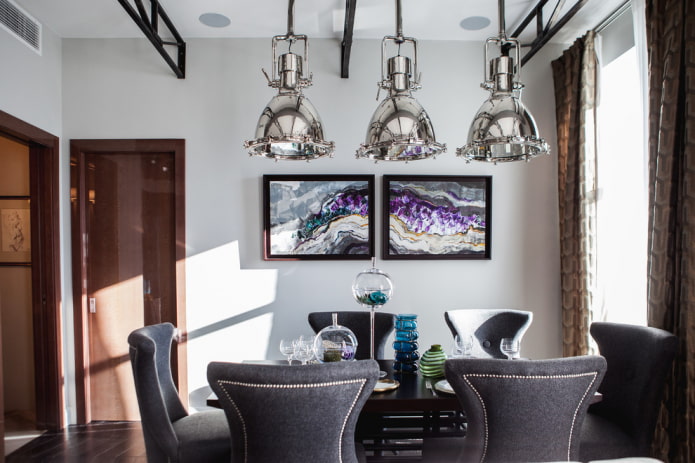
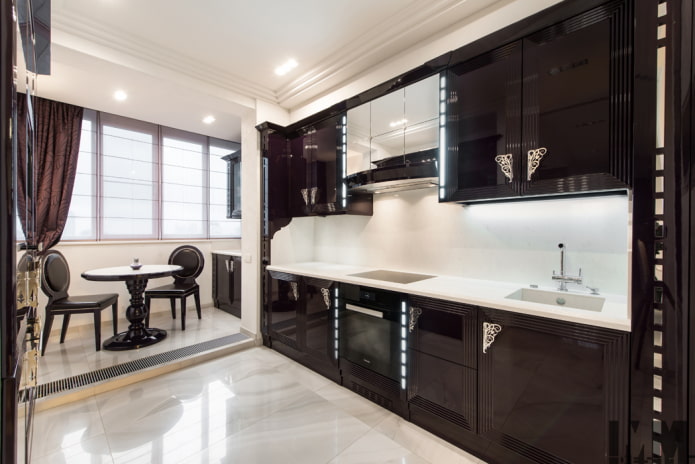

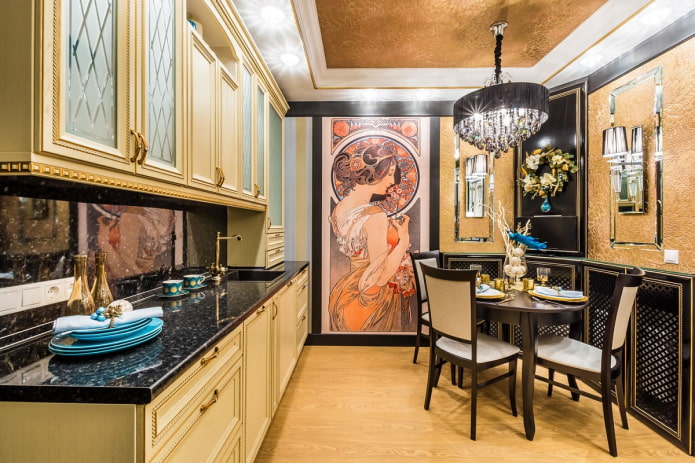
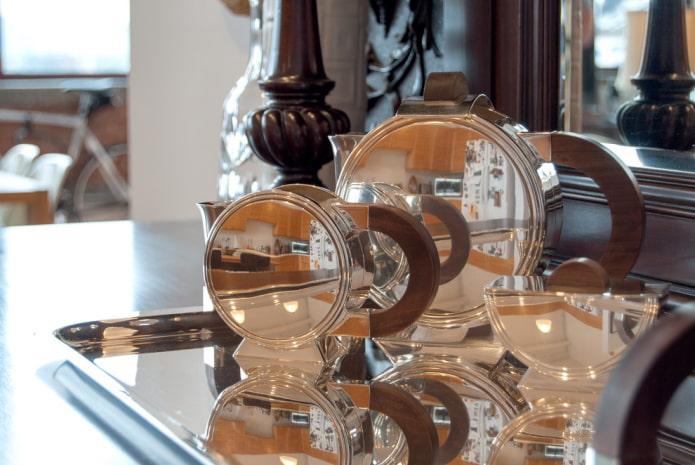
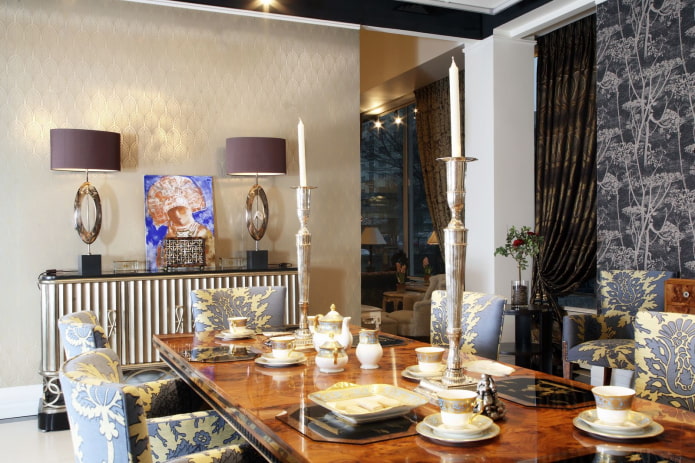
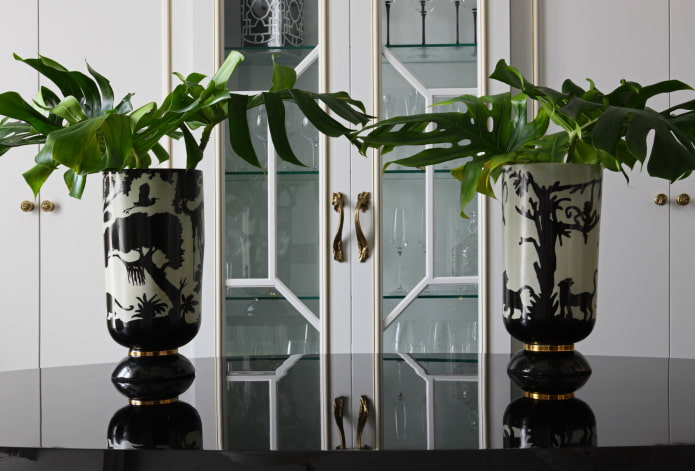

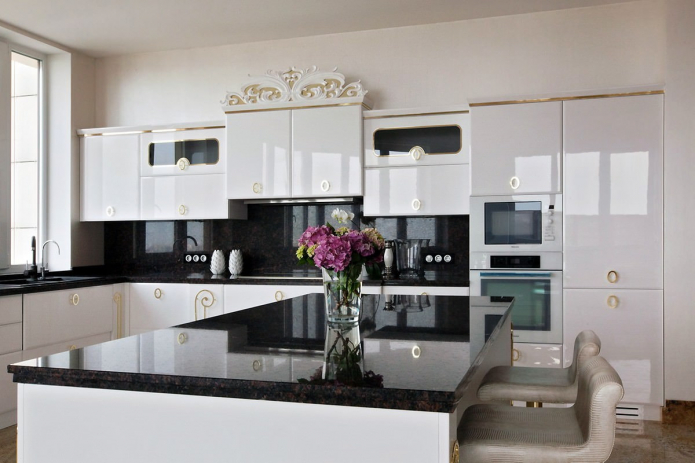
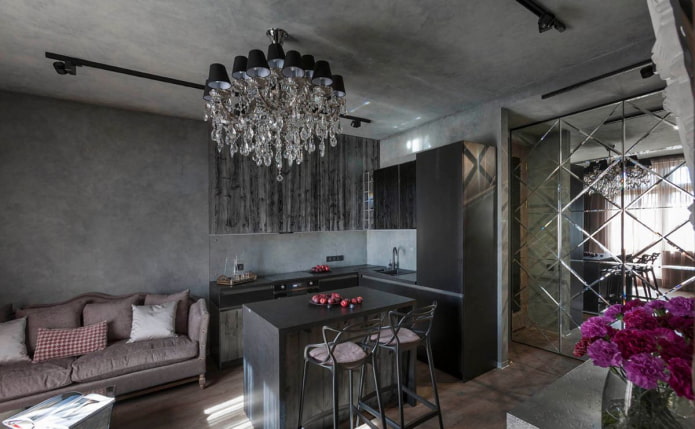
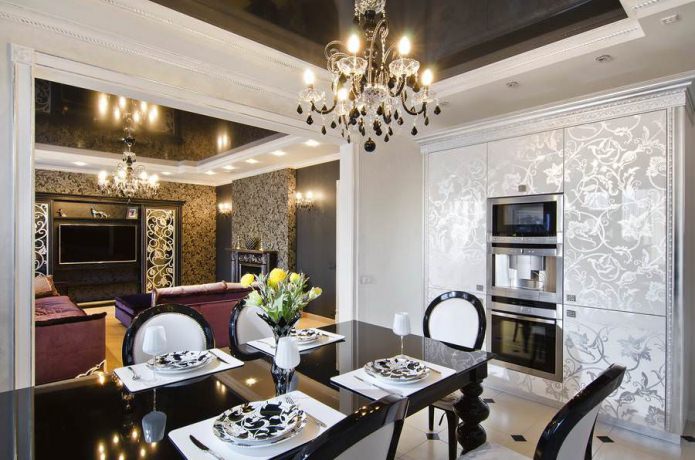
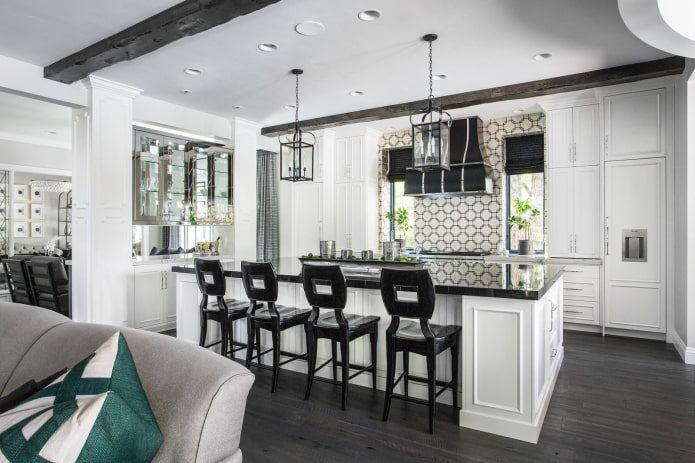
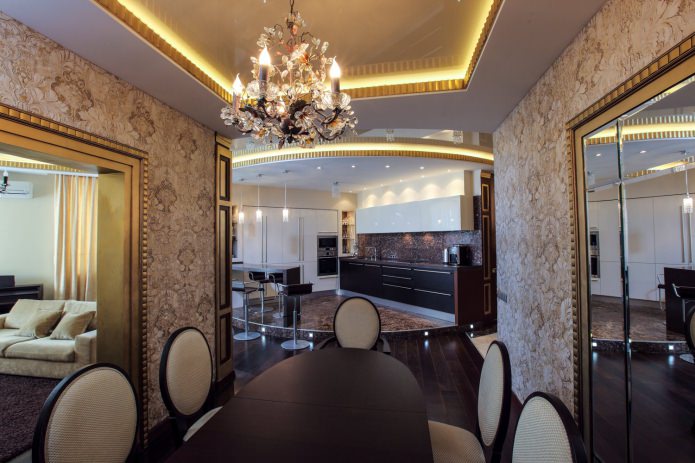
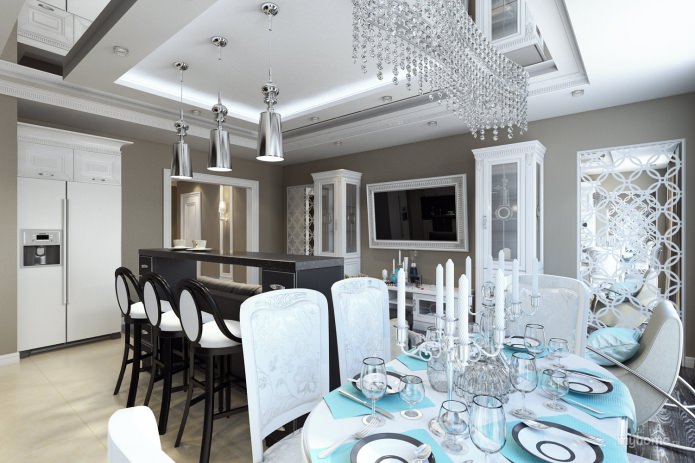

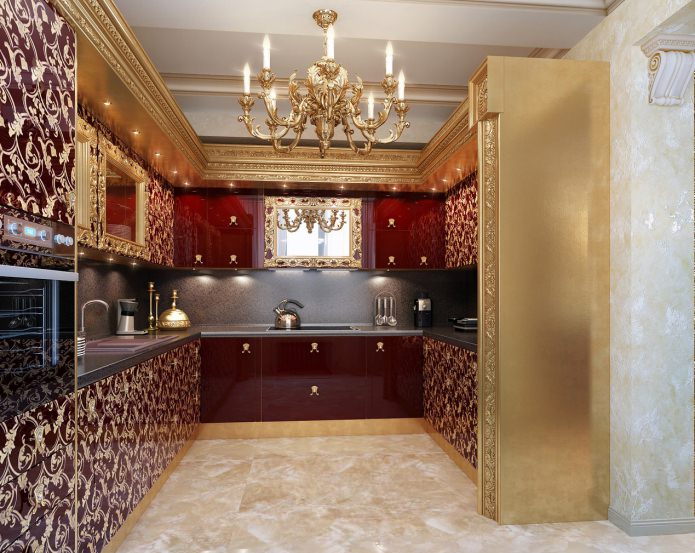
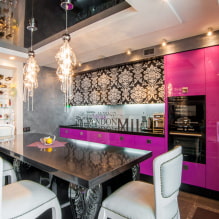
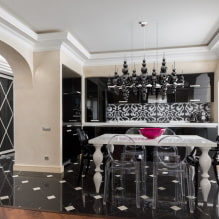
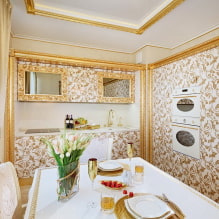
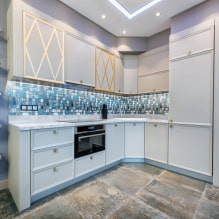
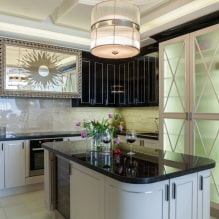
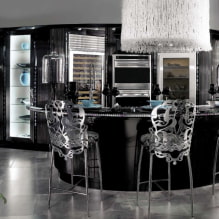

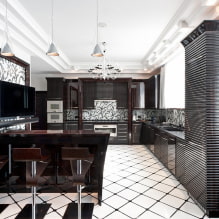
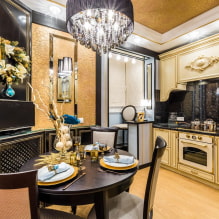
 How to choose the color of your kitchen sink?
How to choose the color of your kitchen sink? White kitchen set: features of choice, combination, 70 photos in the interior
White kitchen set: features of choice, combination, 70 photos in the interior Black set in the interior in the kitchen: design, choice of wallpaper, 90 photos
Black set in the interior in the kitchen: design, choice of wallpaper, 90 photos How to choose curtains for the kitchen and not regret it? - we understand all the nuances
How to choose curtains for the kitchen and not regret it? - we understand all the nuances Design of a white kitchen with a black countertop: 80 best ideas, photos in the interior
Design of a white kitchen with a black countertop: 80 best ideas, photos in the interior Kitchen design with green wallpaper: 55 modern photos in the interior
Kitchen design with green wallpaper: 55 modern photos in the interior